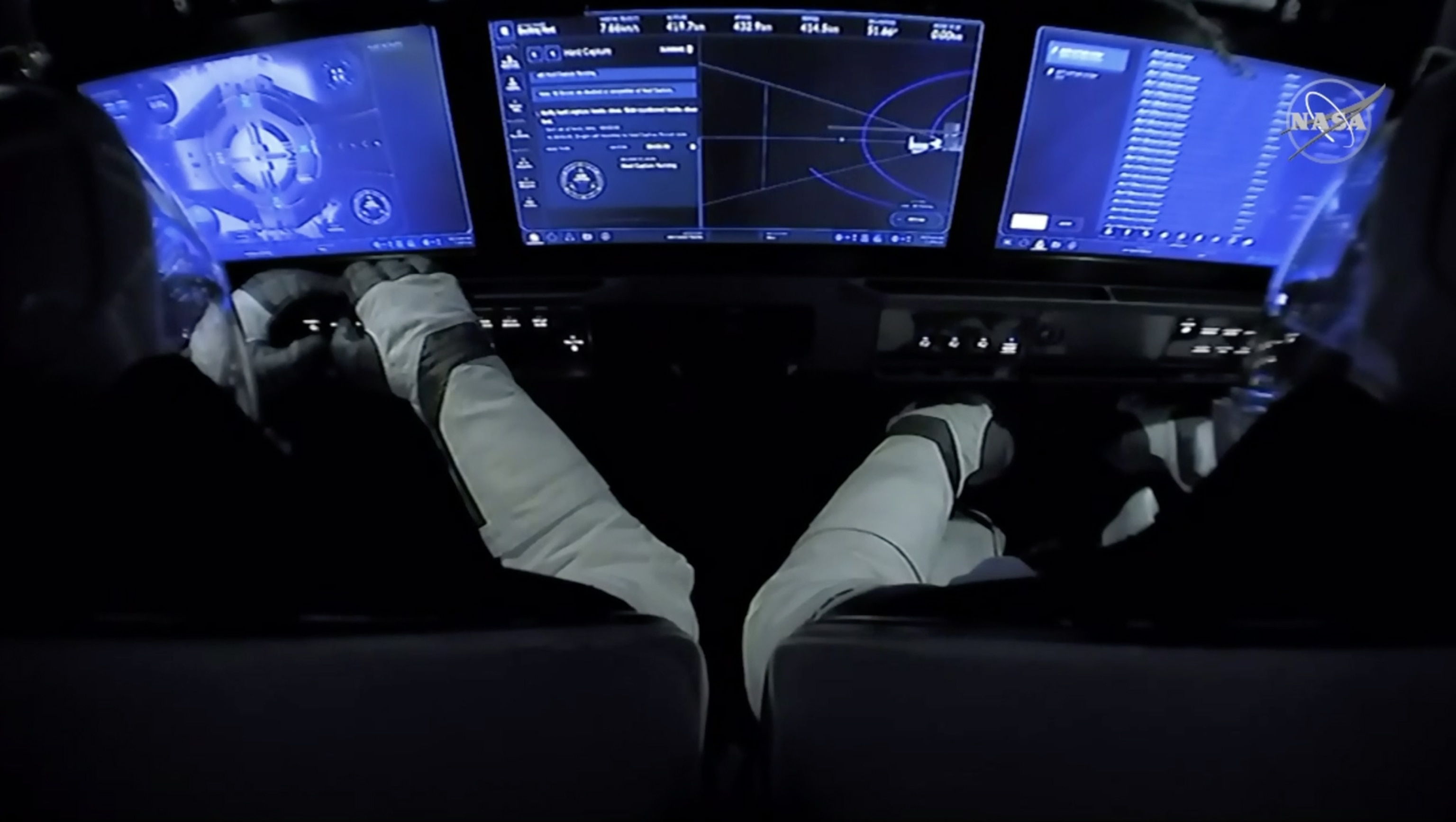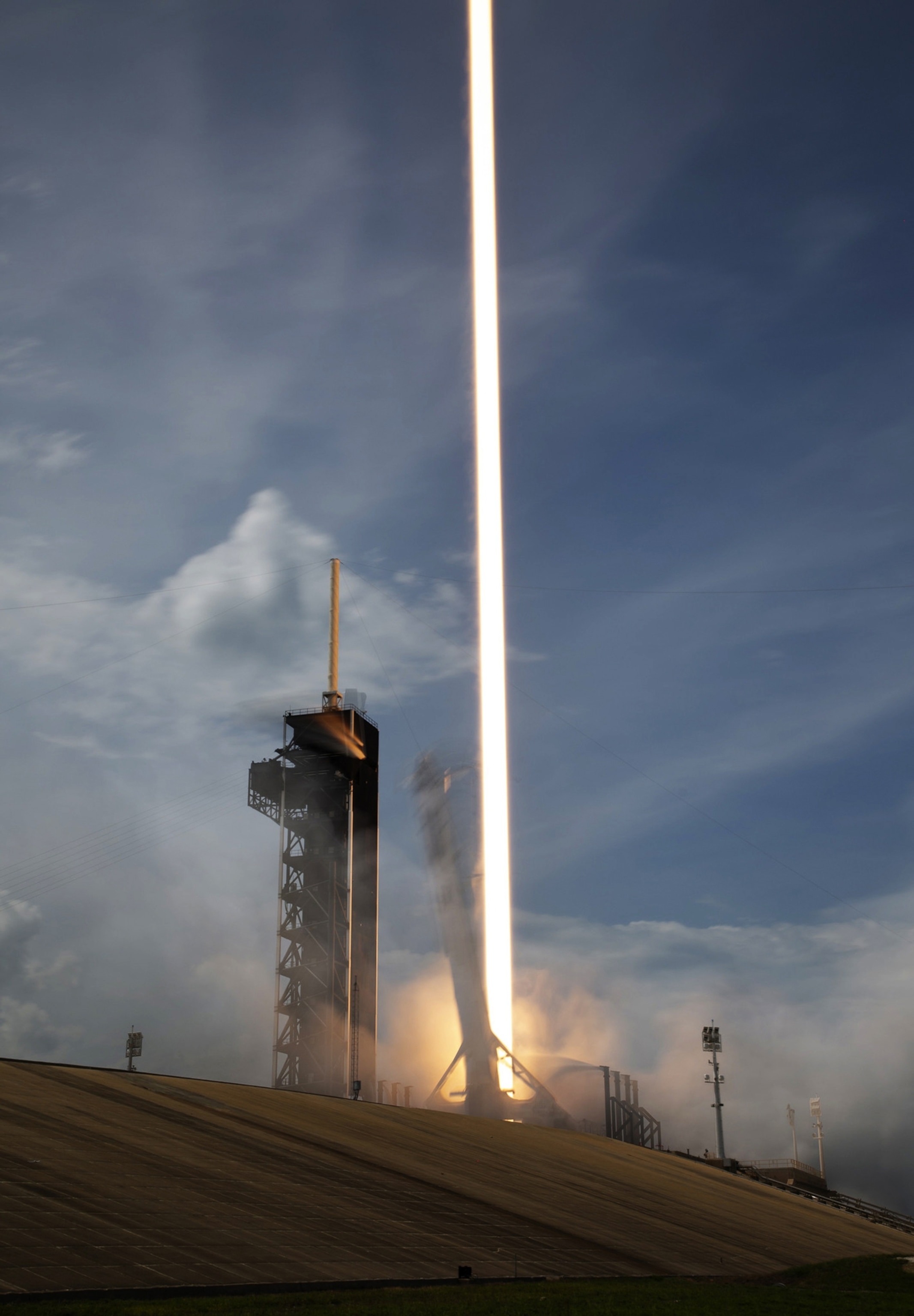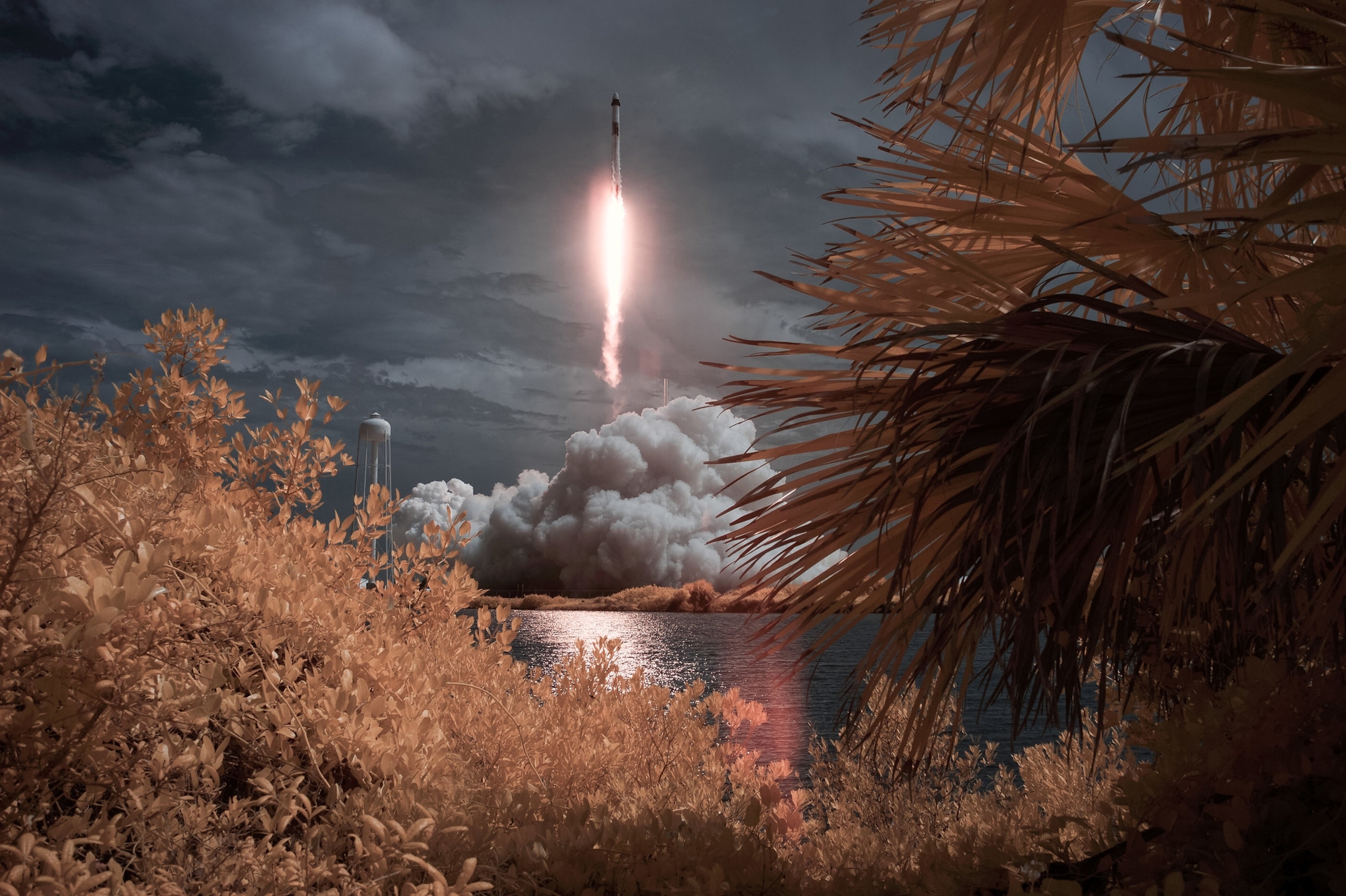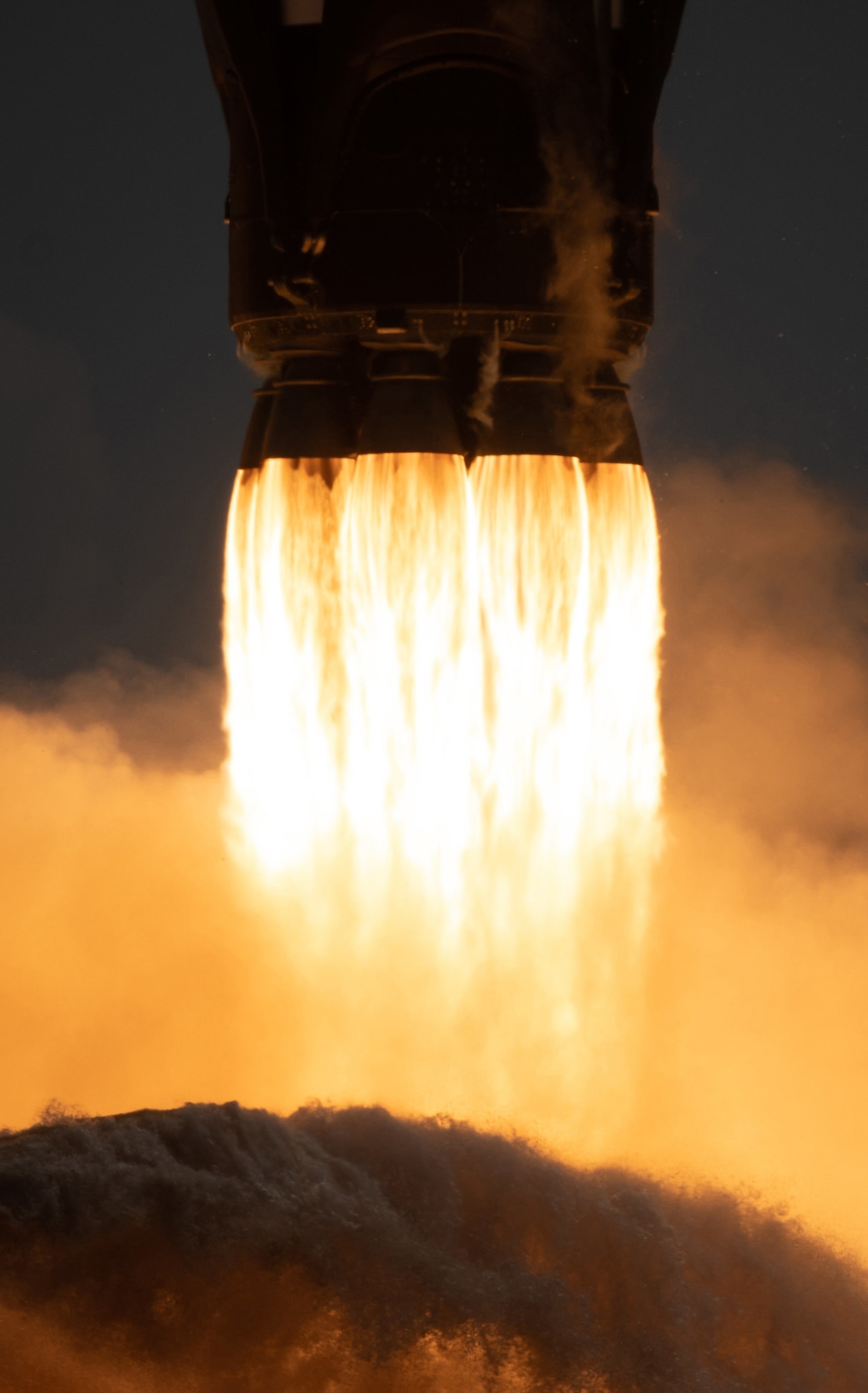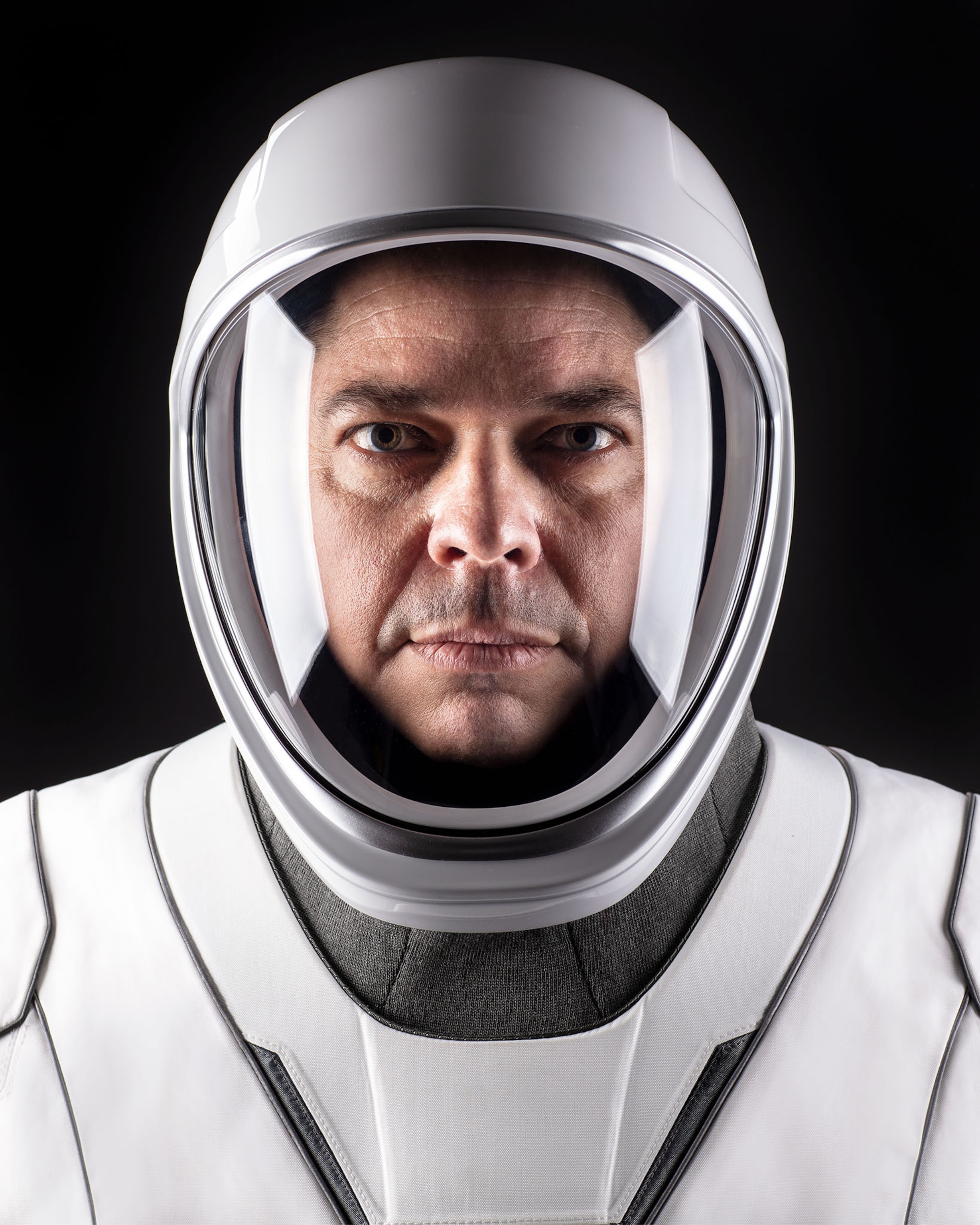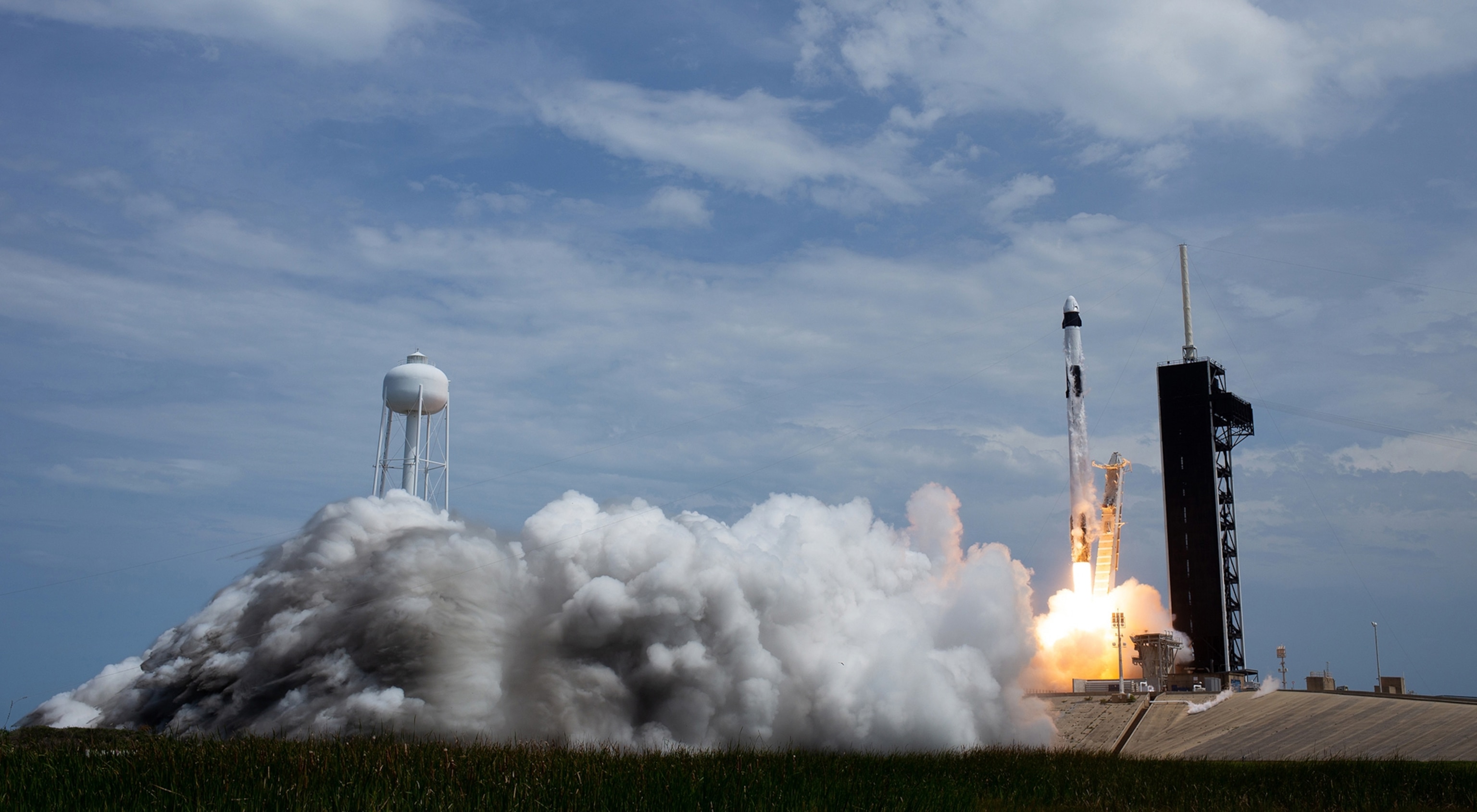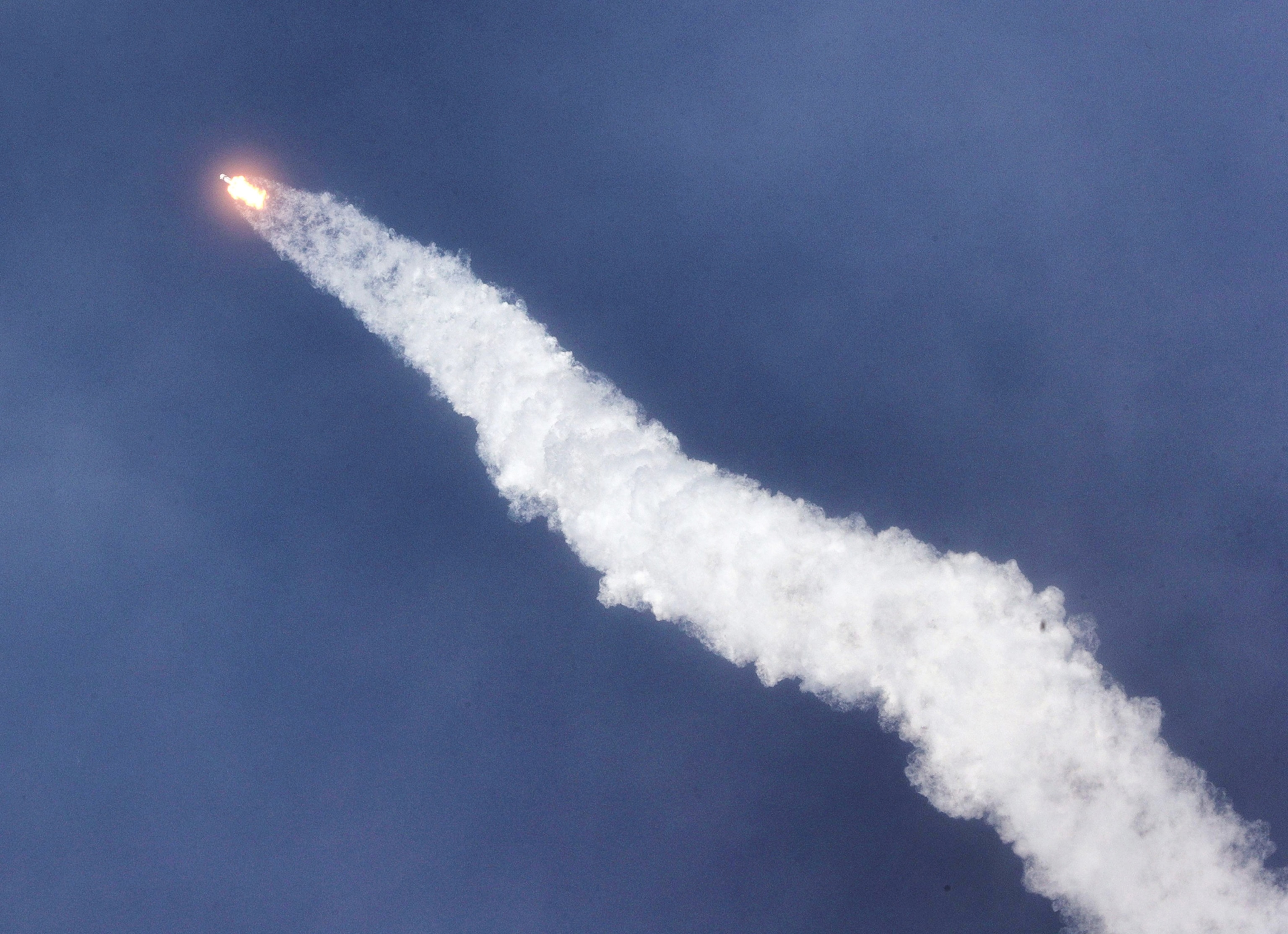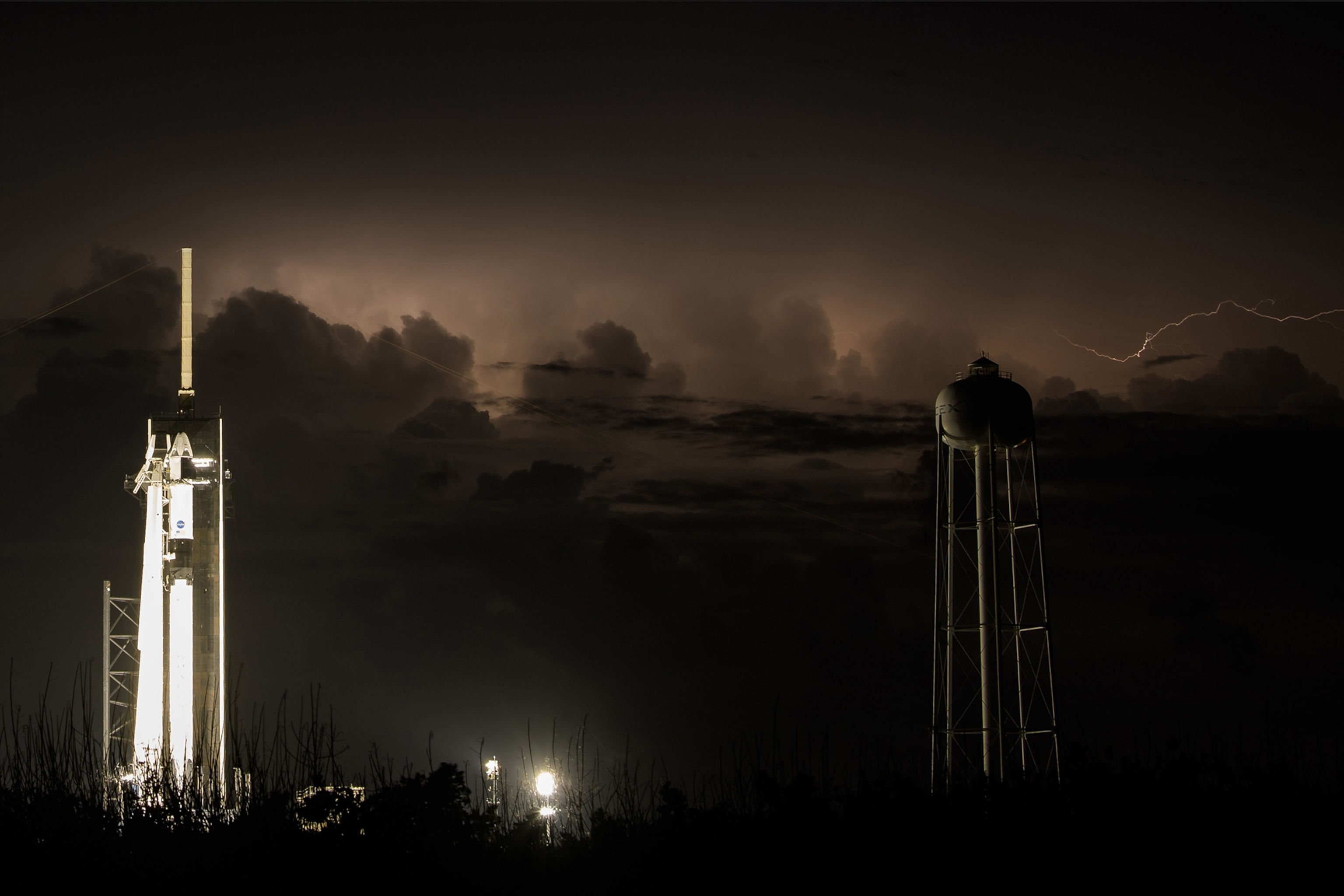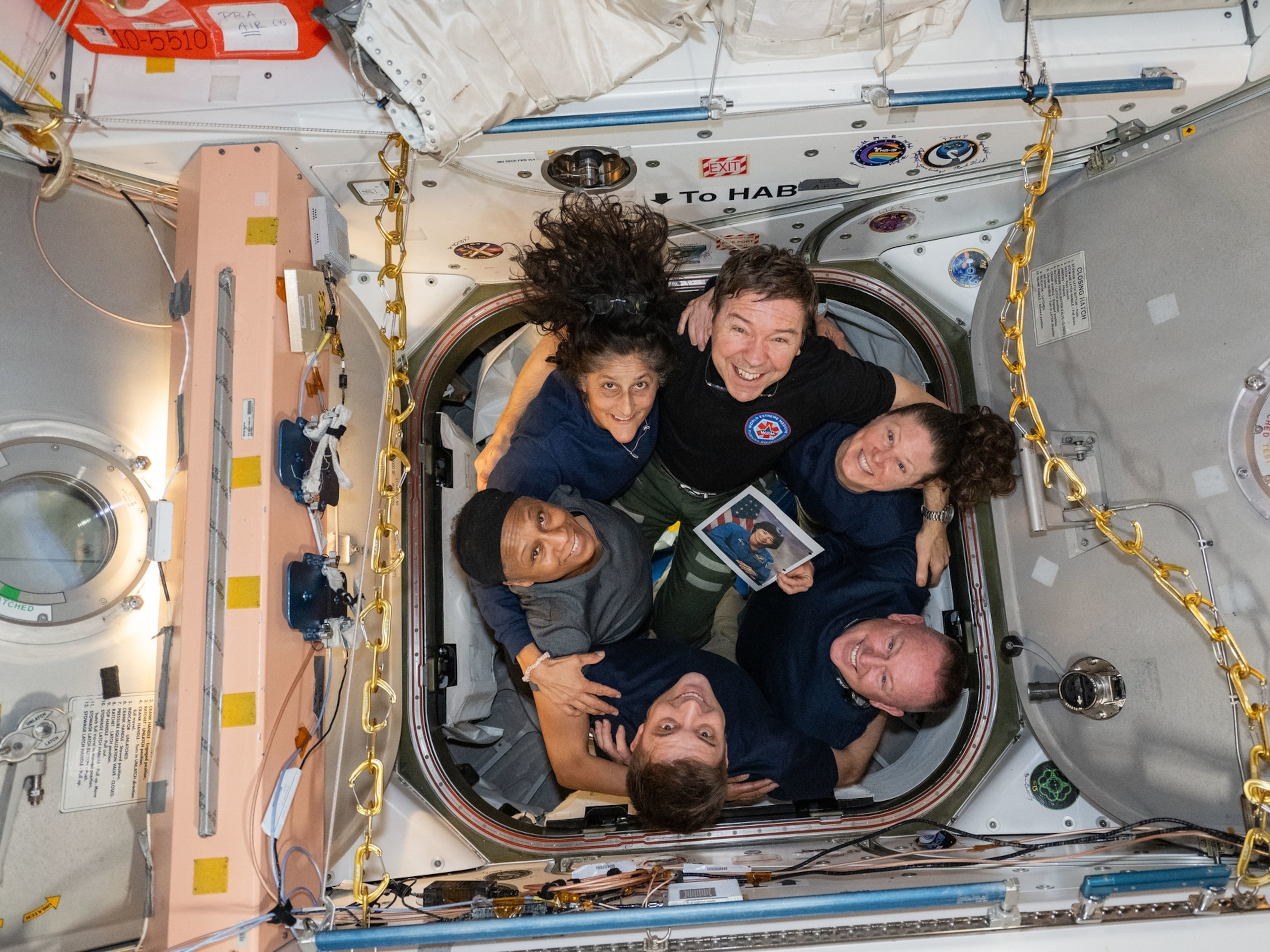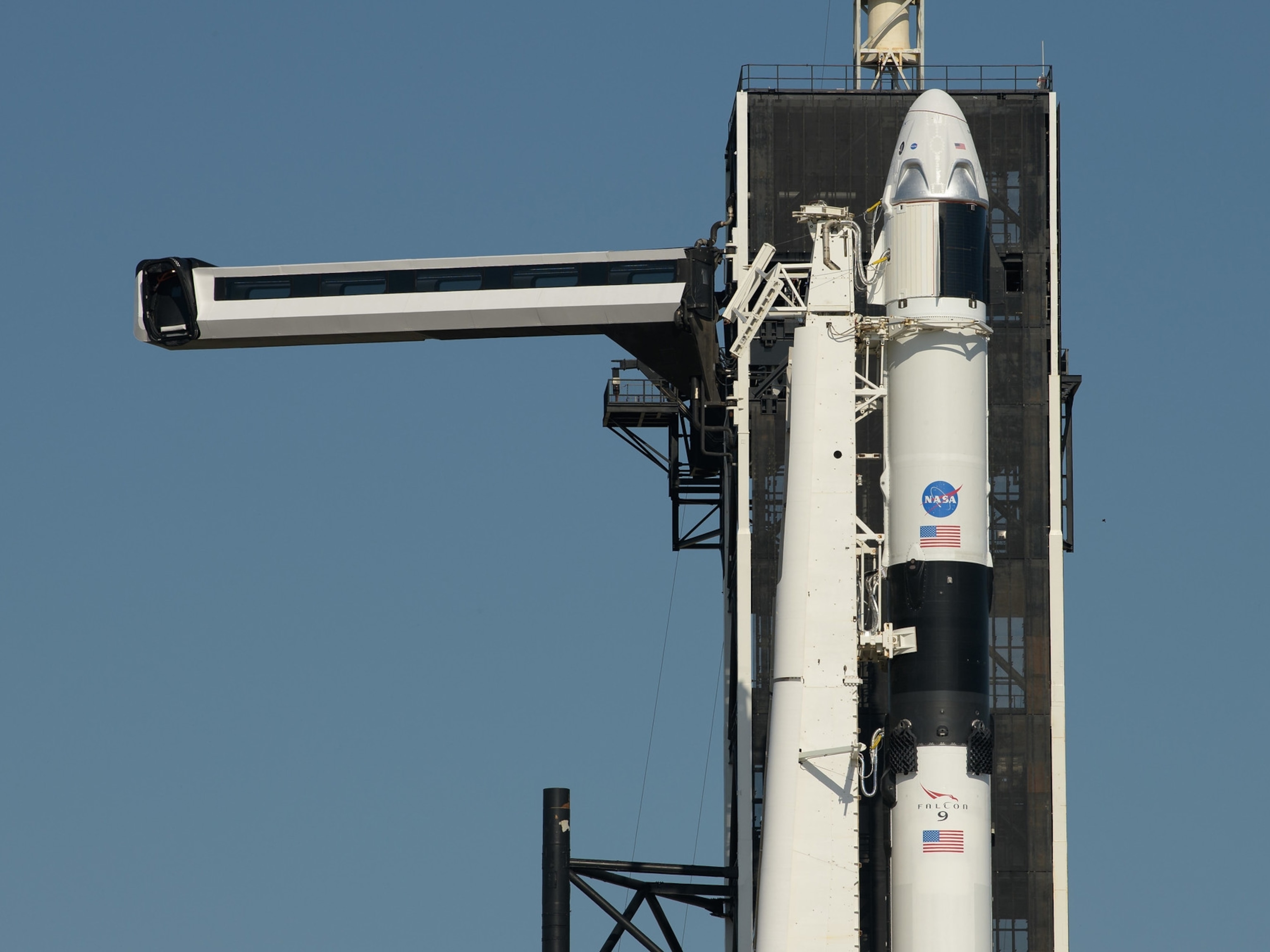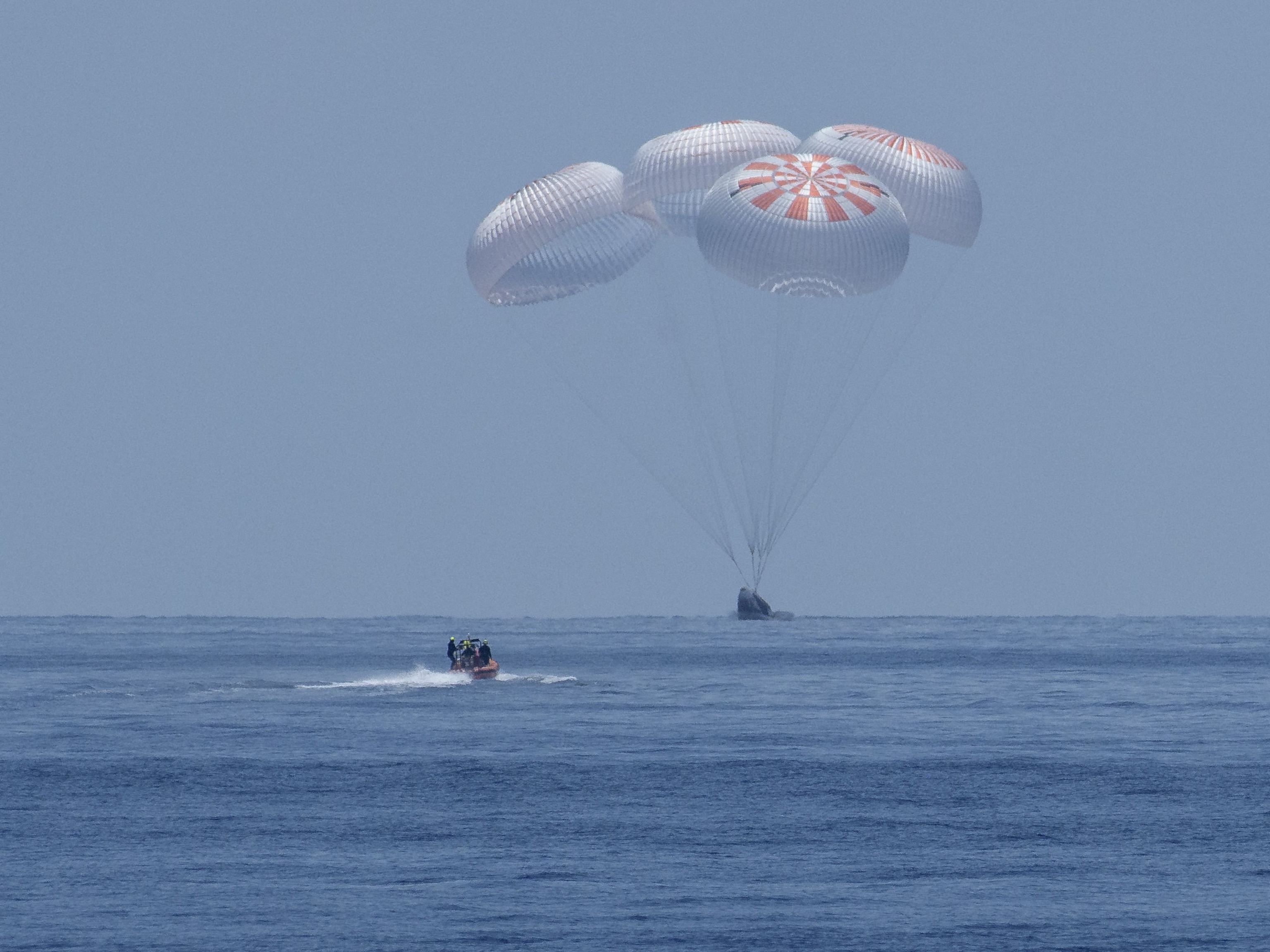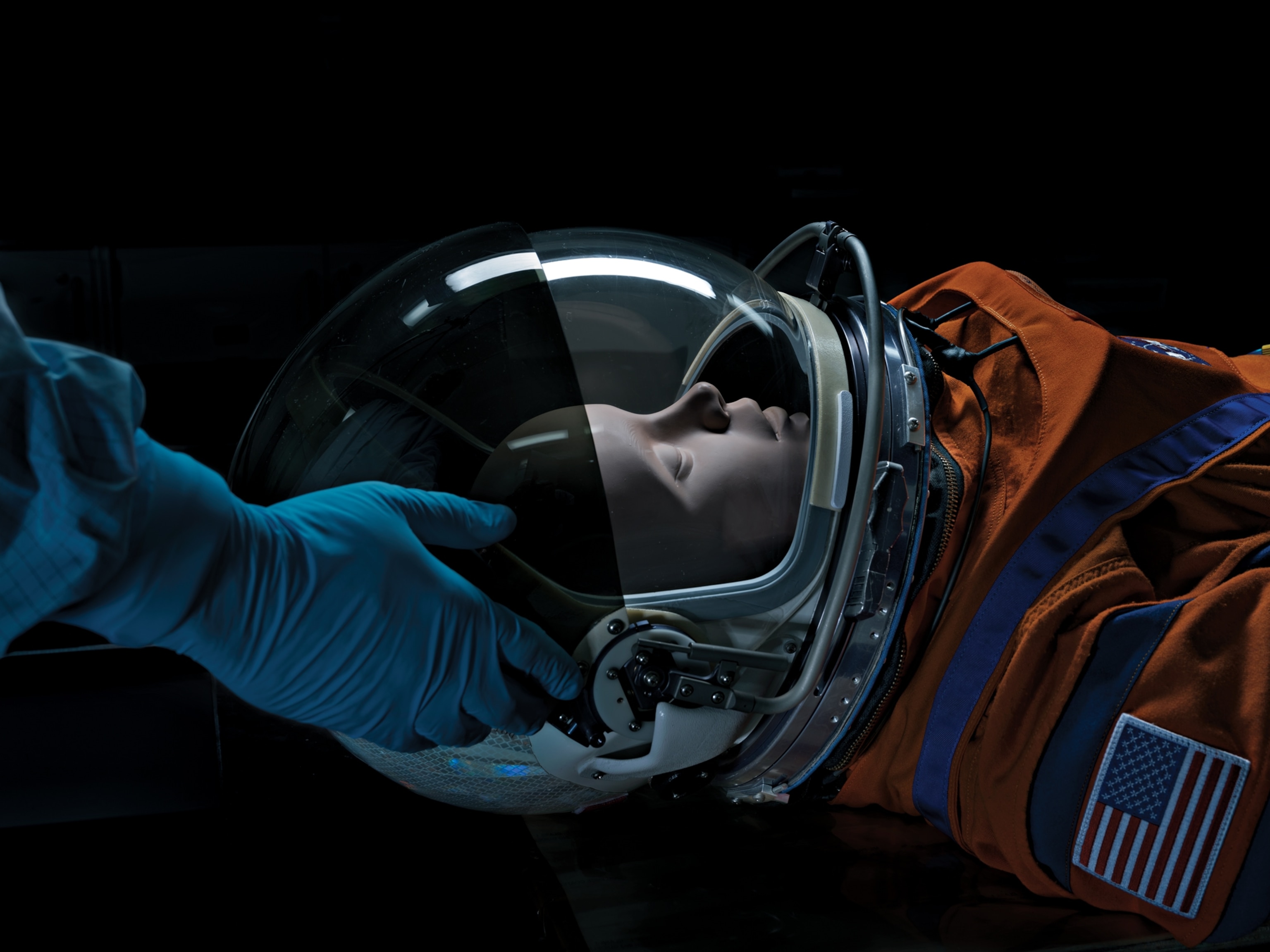SpaceX crew docks with the International Space Station. See photos from the mission.
Two veteran NASA astronauts have joined the crew aboard the orbiting lab, marking the first human flight to space from U.S. soil since 2011.
Cape Canaveral, Florida — After a nearly 19-hour cruise, SpaceX’s Crew Dragon spacecraft arrived at the International Space Station and successfully docked with the orbiting laboratory. Piloted by NASA astronauts Bob Behnken and Doug Hurley, Dragon is the first vessel to carry humans into space from U.S. shores since 2011.
Named Endeavour by its crew, the spacecraft docked to the ISS at 10:16 a.m. ET as the station passed over the border between China and Mongolia. The astronauts will work to equalize the pressure and temperature between Dragon and the ISS before Behnken and Hurley make their way into the station, where they will stay for between one and four months.
“It’s been a real honor to be just a small part of this nine-year endeavor, since the last time a United States spaceship has docked with the International Space Station,” Hurley said after docking.
Behnken and Hurley, both veteran astronauts and military test pilots, used the last portion of their flight to the ISS to put the Dragon through its paces. Just 650 feet from the space station, the pair tested Dragon’s manual flight capabilities, which allow the astronauts to take control of Dragon if the autonomous docking mode fails. The spacecraft then inched to within 65 feet of the station and docked autonomously. Now berthed, Dragon will siphon power from the station instead of using its own batteries and solar arrays.
“Welcome aboard the International Space Station, Bob and Doug. Glad to have you as part of the crew,” said NASA astronaut Chris Cassidy, a member of the crew currently aboard the space station.
Dragon blasted off from Florida’s Kennedy Space Center at 3:22 p.m. on May 30. This flight is the final test of a brand-new spacecraft capable of carrying humans into orbit, and if the rest of the mission goes well, Crew Dragon will be certified for future flights. NASA can then begin operational missions to fly astronauts to the ISS on the spacecraft, with the first mission called Crew-1 targeted for late August.
Yesterday’s launch was the second attempt to send Dragon to space with Behnken and Hurley aboard. Clouds and lightning forced SpaceX and NASA to call off the first attempt on May 27, and as the backup date approached, weather forecasts looked dubious again. But as the countdown proceeded on Saturday, the skies cleared and conditions were declared “go” for launch.
Crowds gathered along Florida roadways, on beaches, and on rooftops in Cape Canaveral to watch as Dragon took flight atop a blinding plume of rocket fire, punching through low-hanging clouds and leaving a twisted, cloudy trail in the fortuitously blue sky. As Behnken and Hurley raced to the space station, celebrations on the ground hailed a successful return of human spaceflight from the United States and the opening of a new chapter in space exploration in which commercial companies can build and operate their own crew-ready spacecraft.

